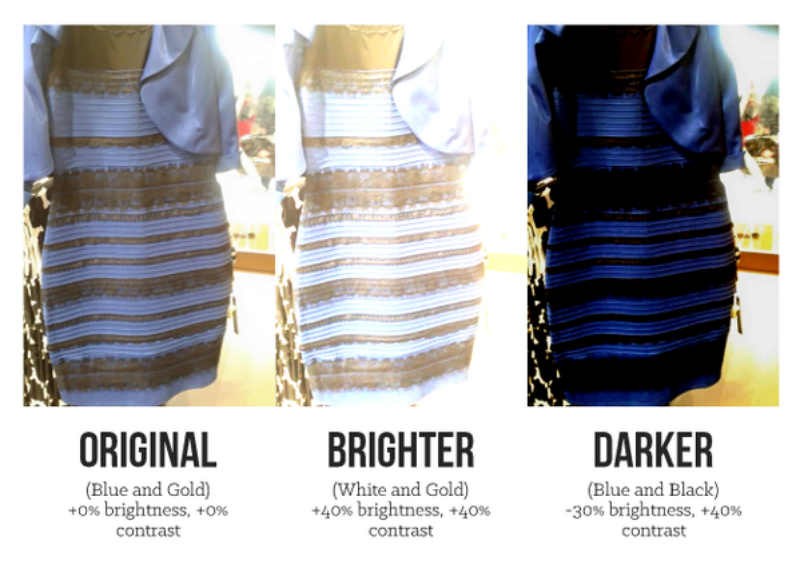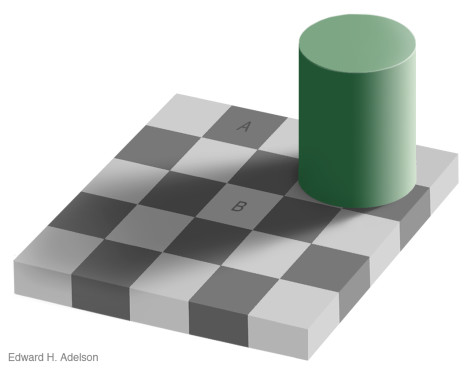What do you really see?
Recently, #TheDress caused a viral sensation and became the subject of discussion on social media sites and real-life conversations. The great debate lies in the colors that people see in this simple, yet deceptive image. Some claim white and gold, others passionately defend blue and black; some individuals even claim that the colors changed right in front of them. No matter how hard I try, I only see white and gold in the original dress (don’t try to convince me that I’m wrong). Attention regarding the dress grew exponentially and with such varied responses, people began to look for explanations. Why do different people see this basic dress so differently? Despite the many theories, the reality is that the dress is an optical illusion.
Optical illusions may make you think you’re insane, or abnormal; that was, at least, my initial response when friends were telling me that the original dress is blue and black. To those who have have seen it as gold and white, fear not, because there is a clear explanation behind optical illusions. The mechanisms responsible for illusions are located along the visual pathways; some could originate from the retina, but most of them result from images reconstructed by the visual cortex, captured by the eyes. Each optical illusion is unique in how the images are constructed.
One of the most famous optical illusions, which has also been referred to multiple times during “the dress” debacle, is the “checker shadow” illusion. Created by Edward H. Adelson from the Massachusetts Institute of Technology, this illusion, just like our dress example, is fascinating. What colors do the squares A and B look like? A looks like a darker grey, while B is a much lighter shade, right? Wrong. Despite whatever you may be seeing on the checkerboard, A and B are actually the same exact shade of grey. The human’s visual system needs to classify the colors of objects in the world. Through different mechanisms, the visual system tries to determine where the shadows are and how to compensate for them in order to determine the shade of gray. Our brains alter our perception of the image. What we see is what we know in the real world, such as the idea that the square should be a much lighter shade of grey if a square in the shadow is reflecting the same amount of light as one outside of it.
Optical illusions show that perception, as constructed by our senses, is powerful. When it comes to the dress, is anyone really wrong when considering its colors? How can you distinguish between the arbitrary concepts of right and wrong, when each person has a different sense of the dress? This huge, seemingly silly discussion is more thought-provoking than what anyone imagined a simple dress could generate.
Sources: dailymail.co.uk, theguardian.com, web.mit.edu

Sylvia, sometimes referred to as Sassy Sylvia, is the Features Editor. She has been part of The Talon for two years. Her passions include listening to...










